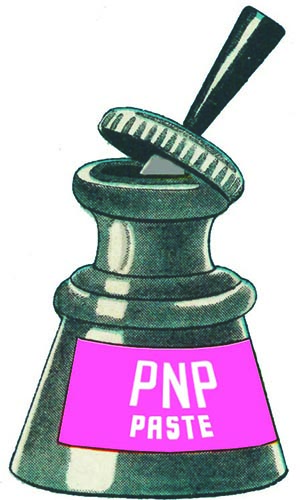A red robin on a stump in the bush is an uplifting sight, enough to erase any thoughts of contributing to CRANK, and just begging “photograph me”. Grab camera, locate bird in viewfinder, zoom in 10-fold, activate auto-focus, and flit—the ungrateful wretch flies away. It hadn’t moved for five minutes! My hand twitches and reaches for pen and paper.
It’s not just robins that have this knack. Crows that have been casing your food bags for hours vanish at the appearance of a camera. Herons, egrets, honey-eaters, hawks, emus, you name it—all are in (or should that be not in) my collection of “this was where the <insert expletive-enhanced name of bird> was” photos.
It slowly dawned on me that my camera was controlling the birds’ minds. I should have realised sooner—there’s even an ESP mode for goodness’ sake. And once you are aware of this menace, you realise it’s rapidly spreading. Only the other day I saw an entire swamp cleared of hundreds of ducks: a fellow walker simply raised his iPhone and the whole bloody lot took off, leaving just a few cormorants. Yes, yes, I know that suggests a GM solution to the problem but it won’t work. Although no cormorant has ever flown off when being photographed, the pressing of the shutter induces a subtle turning of the head that destroys the bird’s profile and hence the picture.
Besides, this power is not limited to the avian world. Kangaroos and wallabies will watch inquisitively for hours—but camera out, off they hop. A baby wombat tries unsuccessfully to hide under its fleeing mother. Cats and dogs stop their captivating behaviour. All animals succumb to the camera’s power!
Even humans are affected. What else could be causing the exponential epidemic of “selfies”? How many times have previously sloth-like people materialised between you and your subject? Reflect on that shot of a fat bottom or a hand with a plate of food or even a bicycle rider. Those interlopers were not thoughtless dolts—they were controlled by the camera. This manipulation starts young too: kids smiles turn to frowns and tears at the sight of the camera. Maybe so-called primitive tribes were right in thinking that a camera takes one’s soul. That might explain those red-eyed snaps.
But worse, it’s not just animate objects that are affected. The lamp post growing out of a person’s head, the electricity wires passing through their ears, or the underpants on the clothes line, all of which moved into position just as the shutter was pressed. Water is a pushover for the camera: a spectacular double rainbow arching across the sky fades to nothing, a cloud passes over the sun, and a mist descends on a panorama—each in the time it takes to ready the camera. Even the sea’s horizon develops a slant.
And wind too. The Amazonian butterfly with its power to cause a cyclone in Asia has entered folklore. Just why is beyond me. No one mentions the hundreds of thousands of years needed for the said cyclone to start spinning. [1] Compare that to the instantaneous power of a camera. It’s a perfectly windless day and a colourful snapdragon calls out “snap me, snap me!” Off with the lens cap and whoosh, a gale starts blowing around the flower. Yet one more blurred photo—every time!
While “point and hope” is the mantra for viewfinderless cameras, the older claim of “point and shoot” is rubbish. The reality is “point and shit”, the last word uttered vehemently as another prize-winning shot is ruined by the camera’s malicious telepathic and telekinetic powers. We must find a way to eliminate this scourge. We have more to lose than our souls.
SERENDIPITY, WARRNAMBOOL
- What scientists are starting to realise is that the current global warming has nothing to do with today’s carbon dioxide levels but results from the interaction of a tract of red-hot pokers (Kniphofia uvaria) and a Lepidopteral swarm millennia ago.
A robin redbreast on the branches would have provided a ray of colour in this gloomy scene. It certainly would have but there was no red robin about to actually be scared away by the camera. Image by the author.


